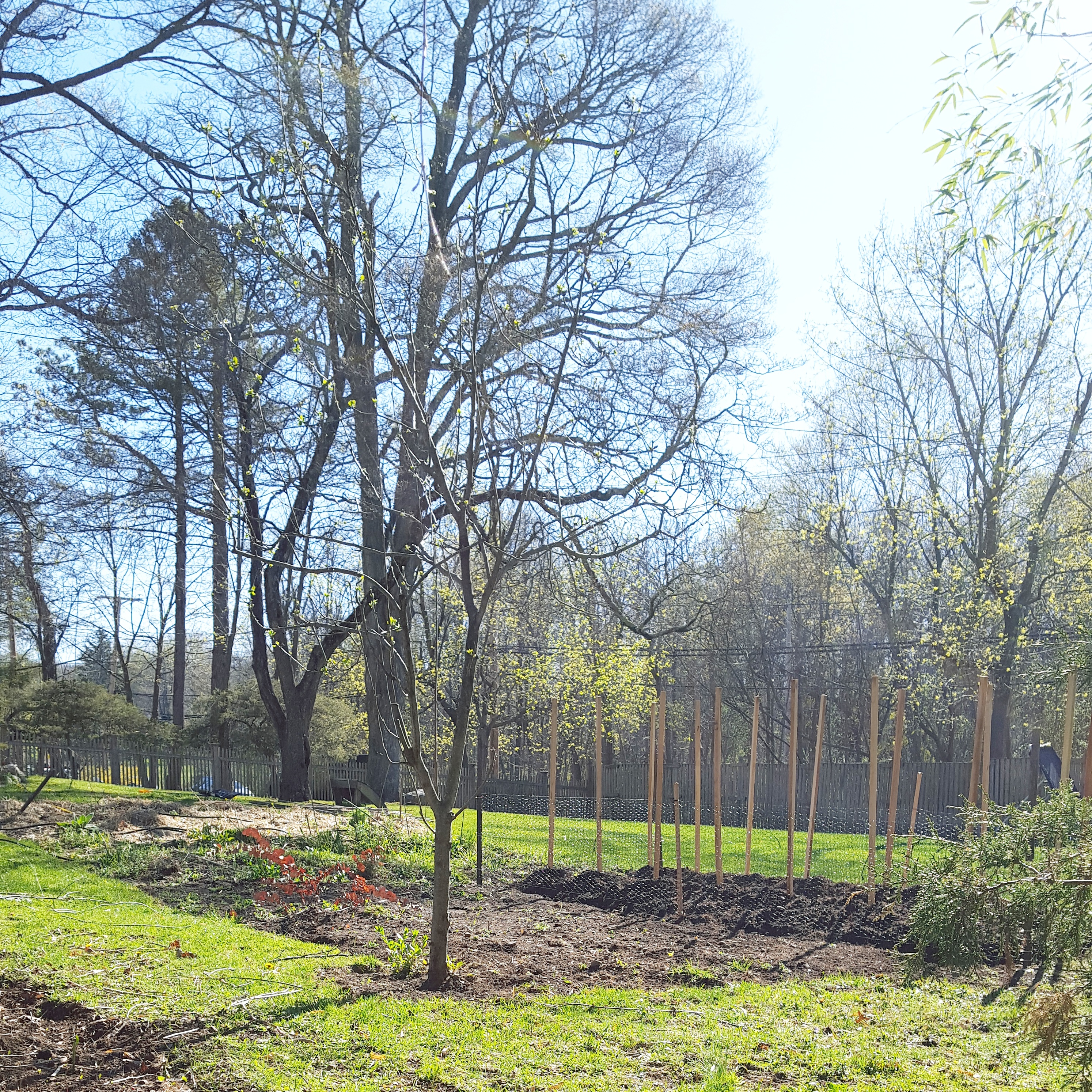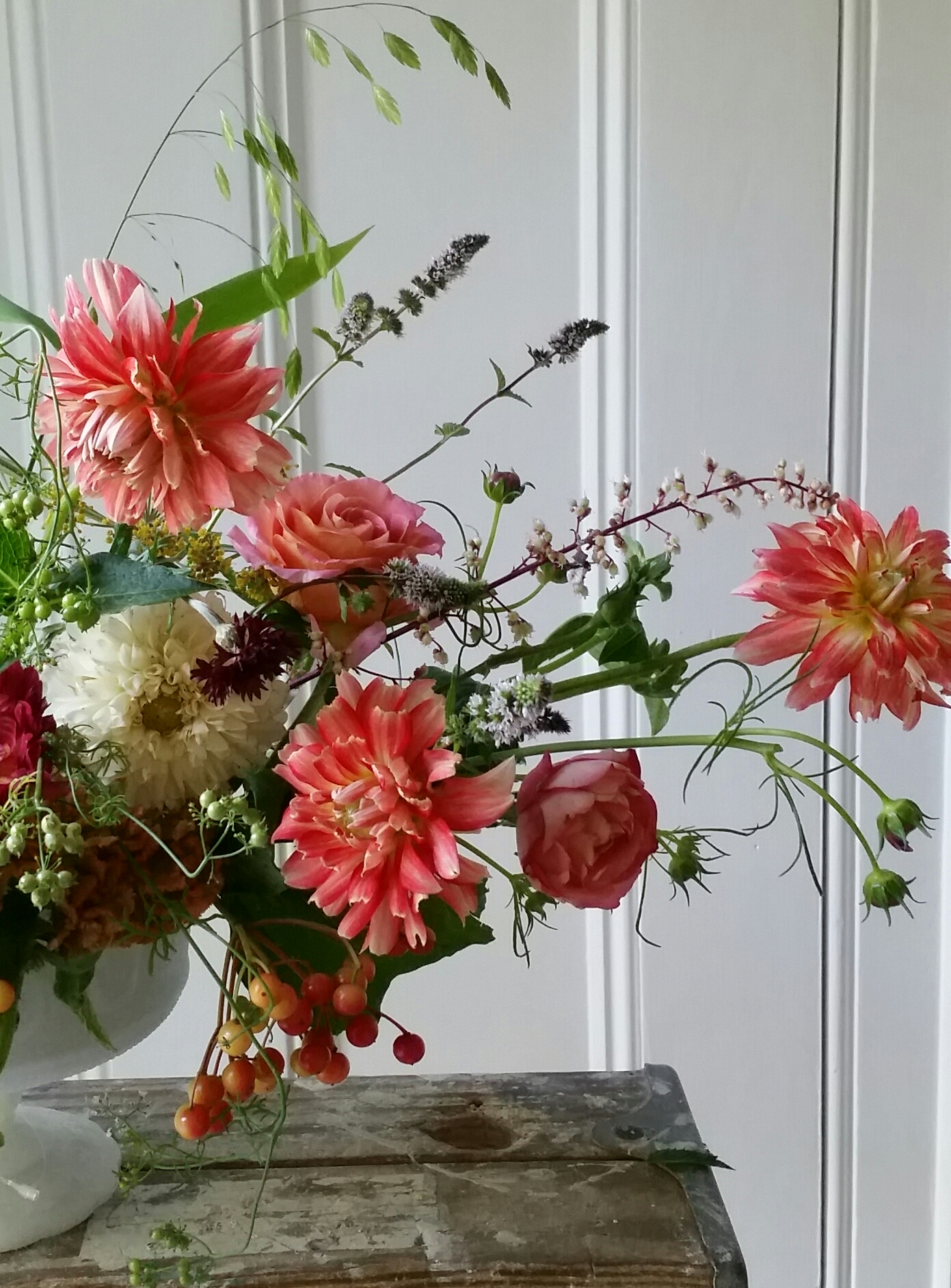How to plant and grow Dahlias is not as difficult as you may think. When I began my floral business, my first focal flowers of choice to grow in my cutting garden were Dahlias. These big bushy plants, that cost little for an initial investment, consistently bloom during the summer and fall and produce beautiful flowers that are ideal for cutting. For the most part, they are easy to grow and produce a variety of attractive blooms in different, shapes, sizes, colors, and textures for floral design.
Backyard flower farming quickly became the perfect home based business as it allows me to set my schedule while I am still around for my family. I work outdoors which is good for my health, and the garden enhances the value of my home, as well as providing an income.
A few days ago I had the luxury of spending the entire day in the cutting garden, prepping the soil, cleaning, and pruning. It inspired me to share with you how to plant and grow Dahlias. Most of us who adore time in our gardens understand the immense pleasure and joy we feel the moment we step in them. Selfishly it is all about escapism.
As a stay-at-home mother when my children were small, I used my garden as a retreat. Even though I was not away from home, it offered me a place to quickly escape, “I am in the garden,” I would often say to my boys. Gardening relieves my stress and boosts my mood. I am a big advocate of following a strict regimen of gardening to keep me calm and cheerful.
I can’t tell you what joy it brings me that I’ve turned my love of growing flowers into a business and happily seek out their seasonal beauty for my daily sketches. Ok but I digress.
How to Plant and Grow Dahlias
When you purchase a dahlia tuber, it comes in a bag. Notice this funny looking brown cluster resembling brown carrots? The center of each cluster is the important tuber. Attached to it are these finger-like offshoots resembling dangling brown carrots. Look closely at your tuber, do you notice little bumps on it? These bumps are the “eyes”, and it is from these eyes that long stems will sprout up from the soil to hold the flowers.
Dahlias are a Tuber, not to be confused with the bulbs of the tulips.
Whatever Dahlias you choose to plant, the process is the same. Mind you I learned as I went and made my mistakes along the way. It is ok to make mistakes and fail. That is the only way you will learn anything. So please take it from me, you can start out with a simple Dahlia in one pot.
Spacing and Planting
When I plant anything in my garden, I make sure to dig the holes deep and work the soil all around. I add anything to enrich it, like well-rotted manure, my compost, and organic fertilizer. Remember a good soil rich in nutrients is critical for any garden to produce beautiful flowers.
Space them correctly according to the instructions. If you are planting a big Dinnerplate Dahlia, it needs room, because the plant will get tall and large in diameter. Dig the hole in a sunny location near a water source (so you do not forget to water) about a foot deep, and rest the tuber on a mound to support it with the “cluster of carrots’ pointing down on the mound in the hole. Cover the clump with the soil, firm it down over the hole and water each hole well.
Staking
Staking is critical if you are growing the larger varieties. Dahlia stems can be somewhat brittle and often heavy rain, the wind or even the weight of the flowers once they are open can break or bend the stems of the plant. I set one or two stakes beside each tuber after the tubers are in the whole. Staking is an essential part of growing Dahlias but if you do this after their leaves push through the ground you run the risk of puncturing the tuber. As they grow tall, I tie the stems on to the stake.
Feeding
These plants produce gorgeous blooms which are stars in my flower arrangements, so I care for them by feeding them regularly plenty of organic fertilizer which increases my tuber clumps for an even bigger show the following summer.
Watering
Water your Dahlias every other day at first. Do not let them dry out. And you’ll be on your way to pick the most beautiful Dahlias and have fun arranging them as you bring elegant beauty into your home.
In the fall, I will dig these Dahlia tubers up because they would freeze in the ground otherwise. I will probably get a huge clump mass and at least seven to ten more plants from the mother plant. More to follow on how I store these tubers for the winter. More flowers for next year? Now that is good news!
If you are just getting started, I have 3 Tips To Get You Started, 3 Tips to Grow Flowers in your Backyard Garden, and 3 Essential Gardening Tools To Get The Job Done.
If you’d like to see more of my garden, receive tips on how I grow my flowers and use them in arrangements, I invite you to follow me on Twitter, Instagram, Pinterest, and be sure to sign up for my monthly email newsletter.
If you have any questions, I invite you to contact me directly. I’d love to hear how I may continue to help you grow your own slow flowers.




